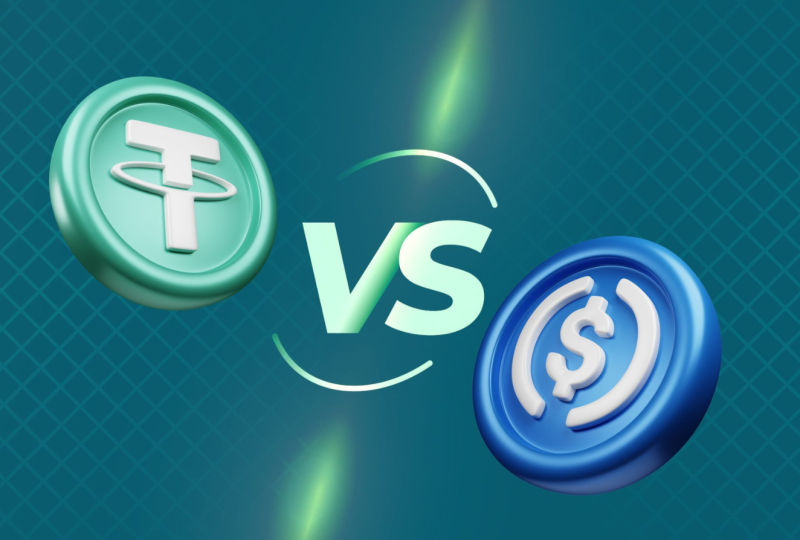Key Differences Between USDC and USDT
Feb 06, 2025

When it comes to stablecoins, USDC and USDT are two of the most widely used options in the cryptocurrency market. Both aim to provide a stable value pegged to the US dollar, but they differ in several key aspects that make them suitable for different types of users. Let’s explore the main distinctions between these two popular stablecoins and why the USDC coin might stand out in specific scenarios.
1. Transparency and Regulation
One of the most notable differences between USDC and USDT is their approach to transparency and regulatory compliance.
- USDC (USD Coin): USDC is issued by Circle, a fintech company that prioritizes regulatory compliance. Circle regularly publishes audits of its reserves, ensuring users that every USDC is fully backed by equivalent assets. These audits are conducted by reputable third-party firms, providing a high level of transparency.
- USDT (Tether): While Tether has made efforts to increase transparency, it has faced criticism over the years for its opaque reserve disclosures. Although the company has started releasing reports about its reserves, these are not always verified by independent third-party auditors.
2. Use Cases and Adoption
Both USDC and USDT are widely accepted in the cryptocurrency space, but their adoption patterns differ:
- USDC: Due to its compliance with strict regulatory standards, USDC is often favored by institutional investors and businesses. It is commonly used in decentralized finance (DeFi) platforms and for cross-border payments where trust and transparency are paramount.
- USDT: Tether remains the most traded stablecoin and is heavily used on cryptocurrency exchanges, especially in trading pairs. It is popular among retail traders due to its liquidity and presence on a wide range of platforms.
3. Reserve Backing
The backing of these stablecoins also differs significantly:
- USDC: USDC’s reserves are fully backed by cash and short-term US government bonds. This clear and secure backing ensures a high level of trust among users.
- USDT: Tether’s reserves include a mix of cash, loans, corporate bonds, and other assets. The diversity of these holdings has raised concerns about the stability of its peg during market volatility.
4. Regulatory Standing
Regulation plays a critical role in how these stablecoins are perceived:
- USDC: Circle has positioned USDC as a fully regulated digital dollar. It complies with the regulations of the jurisdictions it operates in and aims to align with global financial standards.
- USDT: Tether has faced legal challenges in the past, including fines from regulatory authorities. While it continues to operate successfully, its regulatory standing has been questioned more frequently than USDC’s.
5. Technical Features
From a technical perspective, both stablecoins operate on multiple blockchain networks, but their ecosystems differ:
- USDC: Known for its seamless integration with various blockchains, USDC supports platforms like Ethereum, Solana, and Algorand, making it a versatile choice for developers.
- USDT: USDT supports an even broader range of blockchains, including Ethereum, Tron, Binance Smart Chain, and more, giving it an edge in terms of accessibility.
6. Community Trust
Trust is a crucial factor when choosing a stablecoin:
- USDC: With its regular audits and regulatory compliance, USDC enjoys a reputation as a trustworthy and stable digital currency.
- USDT: Despite controversies, USDT remains a trusted tool for many traders due to its widespread adoption and liquidity.
Conclusion
While both USDC and USDT serve the same primary purpose of providing stability in the volatile world of cryptocurrencies, their differences lie in transparency, regulatory compliance, and reserve backing. The USDC coin is ideal for users seeking a regulated and transparent stablecoin with institutional-grade trust. On the other hand, USDT is favored for its unmatched liquidity and accessibility in the trading world. Understanding these distinctions can help users choose the stablecoin that best aligns with their needs and priorities.




